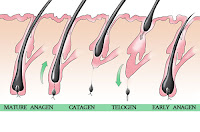There is something about Paris
At the intersection of Rue de Seine and Rue Jacques-Callot in the 6th arrondissement sits one of the most pleasant cafes in the entire world. The name of the place is La Palette. Last week, just after Halloween, having walked past this cafe several times with its tangle of blooming pink rose vines above the entrance, we finally got the chance to sit and have a drink on our way home from art gallery browsing. When we arrived, every outside seat on the terrace was taken except two lonely tables with ‘reserved’ signs. We eventually squeezed through the double front door to a small room with two empty tables open to the air, also reserved. The maître-d’ intercepted us, and before we could explain our intentions, he opened his arms to the reserved tables. Easy. Lucky.
La Palette has none of the affectations that a 2011 food writer might rave about in, say, The Globe and Mail or The New York Times. There is no meat market feel: people, mostly young, all wearing scarves around their necks, come here to talk and sip on an aperitif, some stay on into dinner. There is no throbbing hip-hop with a subwoofer that throws out your sacro-iliac joint. In fact, there is no music at all—one listens instead to the friendly sound of the occasional clink of a wine glass, intermittent “bonsoir” or “merci” between patrons and bustling, black-vested, long white-aproned servers; strangely, one conducts a conversation here without even raising one’s voice. There is no television, no neon: the venerable café is paneled with warm old wood walls and covered with paint-smeared palettes from not-so-famous painters, perhaps famous ones as well, since Picasso and Cezanne, among others, were known to frequent the place. Outside, in fading light, a crowd enjoys the soft air of an Indian Summer. Inside, a long zinc or copper bar with the same warm wood plus marble paneling extends along one entire wall, clearly the command center of the café. We had time for one beer, a delicious Belgian Grimbergen, then back into the balmy Paris
There definitely is something special about Paris







